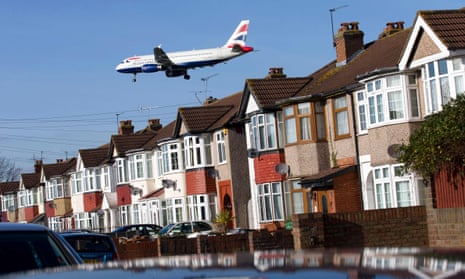The government’s decision to back a third runway at Heathrow has been informed by a mishmash of misinformation and missing information. To take just one example, business flights are in decline. They’ve been in decline for years. And yet the debate is conducted as though they were not only increasing, but increasing at a rate that our current infrastructure is unable to cater for, and our economy is suffering as a result. But they’re not, they’re declining.
Here’s another. Heathrow can’t afford to expand with its own money. Surface access costs for Heathrow are only affordable with a huge subsidy from the taxpayer. Heathrow will only pay £1bn for the additional road and rail links required to get the extra passengers to and from Heathrow. Transport for London say it will cost £18bn. Anyone see a small discrepancy?
There may be general, underlying sociological trends which explain why the big issues of our time are decided on the basis of incomplete and misleading information, but with the runway argument there is an additional reason. We privatised the decision. By turning it into a competition between Heathrow and Gatwick lobbyists, we allowed the debate to be conducted by two parties that both firmly agreed that building a new runway in the south-east should be the nation’s top priority.
They were both happy to point out the relative flaws in their rival’s plans, but are equally content to ignore any flaws which affect both. The media accepted the framing, and so despite extensive coverage, the biggest, most important flaw has been missing from the debate. The BBC has covered Heathrow on all of its flagship news and politics shows – Newsnight, the Daily Politics, the Today Programme – without even touching on the main issue.
It’s easy to miss something that’s invisible, silent, odourless and tasteless. Particularly when you have a strong financial incentive to do so. And the entire aviation industry has a very strong financial incentive to ignore CO2. They’ve been successfully ignoring it for decades, and last month’s UN-affiliated international aviation conference made it abundantly clear that it is content to continue with its current approach.
Unfortunately, there are no imminent technologies that, in the short to medium term, will make aviation a low-carbon industry. The only feasible way to significantly reduce aviation’s impact on the climate is to significantly reduce aviation.
The Climate Change Act requires the UK economy to reduce its emissions by 80% from 1990 levels, by 2050. Aviation is allowed to increase its emissions by 120% from 1990 levels. They are on course to exceed that 120% without any new runways. So how will building a new runway in the south-east reduce the number of flights down to a level consistent with that target? Unsurprisingly, it won’t. In fact, entirely predictably, it will hugely increase flights and emissions.
Or so a naive observer might think. The serious players in this debate have a different answer to that question. The Davies commission, that entirely independent and impartial inquiry into what colour Heathrow’s third runway should be, has said that it will fit within the UK’s carbon budget. So that’s that, issue resolved. Except, it won’t explain how. This reluctance encompasses the majority who don’t understand how Sir Howard Davies came to such a counterintuitive conclusion, and the small minority who understand all too well.
Davies’ “solution” exists as fragments scattered through his 600-page multi-volume report in an as obscure and obfuscatory manner as he could manage. It’s designed, very effectively, not to be understood. It consists primarily of demand-control measures, primarily carbon taxes. Davies is saying (or rather whispering in pig Latin with a paper bag on his head) that we can build a new runway that has the specific purpose of increasing flights so long as we increase the price of those flights so much that demand drops to a level that reduces the number of flights overall. There are two ways to interpret this “solution”.
One is to accept that everyone is on the level. The new runway will be built, flights will increase, the emissions from aviation will soar ever higher above their target level, and then the government will introduce a carbon tax or similar instrument which will be so punitive, adding hundreds of pounds to every ticket, that demand will drop dramatically back to levels not seen for 40 years. The consequence would be a severe scaling back, or perhaps even closure of airports, in poorer regions of Britain, but not, perhaps, in west London. According to this interpretation, the new runway is not an attempt to increase capacity at all, but to move existing capacity south. And this is in some way a good and useful thing that we should spend billions of public money to support.
The other plausible interpretation is that Davies’ plan for hitting aviation’s carbon targets isn’t really serious. So, the plan for demand-control measures was seen as a necessary thing to have for legal purposes, in order to get the runway built, but was always known to be just as daft as it sounds, and that’s why it was effectively hidden from view.
I’m not certain which is more cynical, the idea that the government is willing to spend taxpayers’ money to redistribute mobility from the poor to the rich, or the idea that Davies’ report is designed to be a black box that allows aviation to expand so long as no one looks inside, an invisible solution to an invisible problem. Unfortunately, the invisible problem is real.
